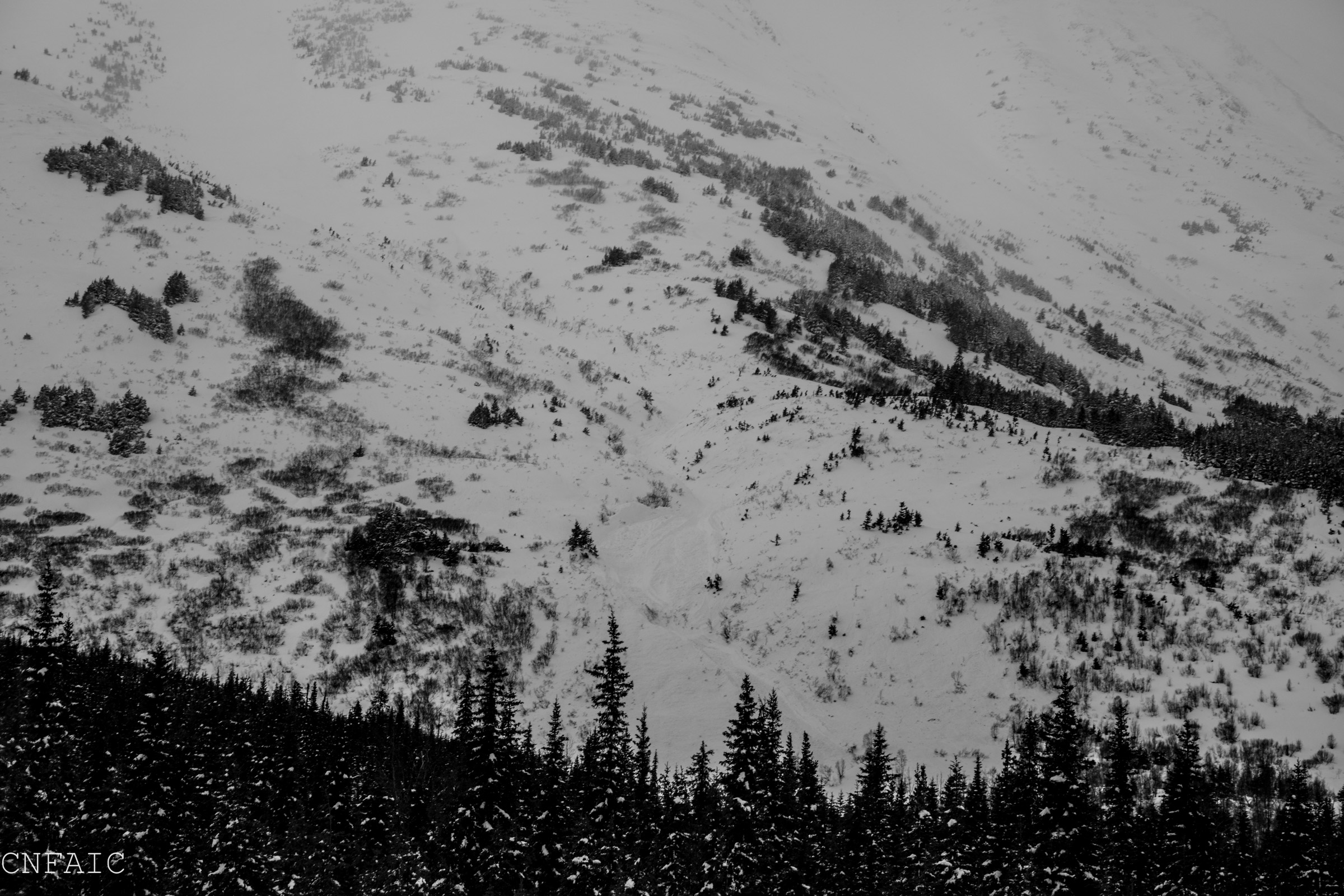Turnagain Pass
|
|
The avalanche danger is HIGH for a fourth consecutive day given the continuation of a series of warm, wet and windy storms depositing heavy snow and rain in rapid succession in the Turnagain Pass area. Travel in avalanche terrain is not recommended again today. Avoid slopes 30 degrees or steeper, including runout zones.
SUMMIT LAKE (& INTERIOR EASTERN KENAI MTS) €“ Areas around Summit Lake have effectively doubled their seasonal snowpack in the past week and dropped up to a 30 € storm slab on a very weak base of facets. Large to very large human triggered avalanches are very likely again today. Travel in avalanche terrain is NOT recommended in these zones.
SEWARD/LOST LAKE €“ Coastal areas such as Seward have seen big precip numbers this week, much in the form of rain. Natural avalanches large enough to bury, injure or kill a person have been observed. Again, travel in avalanche terrain is NOT recommended.
- Please be kind to our DOT plow drivers and give them the space they need to clear the Seward highway corridor. The more efficient they can be with keeping the highway clear, the quicker they can push back our winter recreation parking areas.
- Turnagain Pass 20 years later: On Saturday, March 23rd from 12-2pm swing by the Turnagain Pass moto lot and meet the CNFAIC avalanche forecasters, bring and test your avalanche rescue gear, ask questions and learn about the history of Turnagain Pass and the avalanche center. We’ll even have a few beacons buried so you can test your skills before heading into the hills!
- Heading to Hatcher Pass? Be sure to check out the Hatcher Pass Avalanche Center Saturday avalanche forecast HERE.

